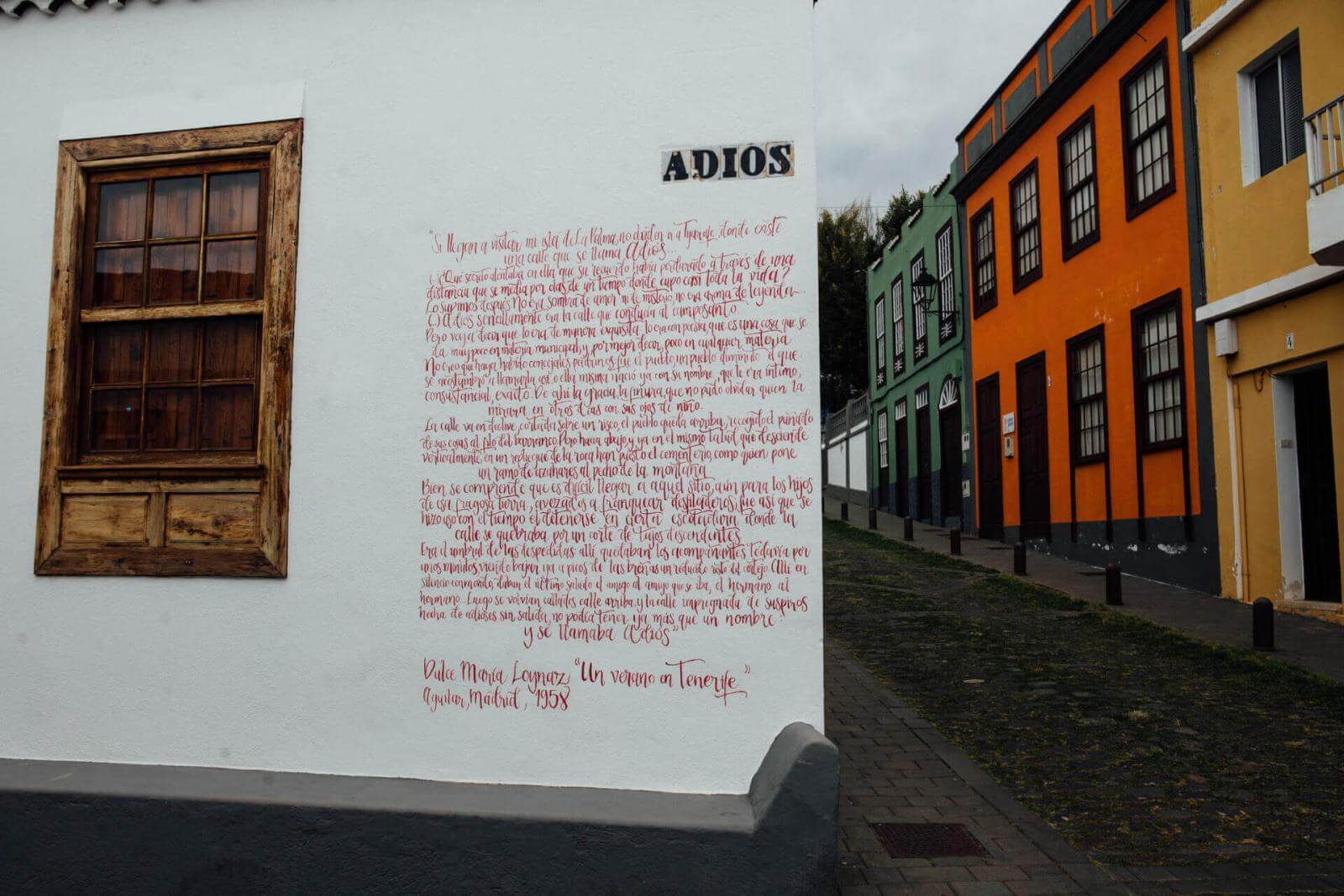Located in the northwest of La Palma, Tijarafe is a traditional and maritime municipality in which avant-garde and tradition are mixed. For those looking for a coastal plan, in Tijarafe there is the Porís de Candelaria, a concentration of houses inside a cave next to the sea that will delight photography enthusiasts.
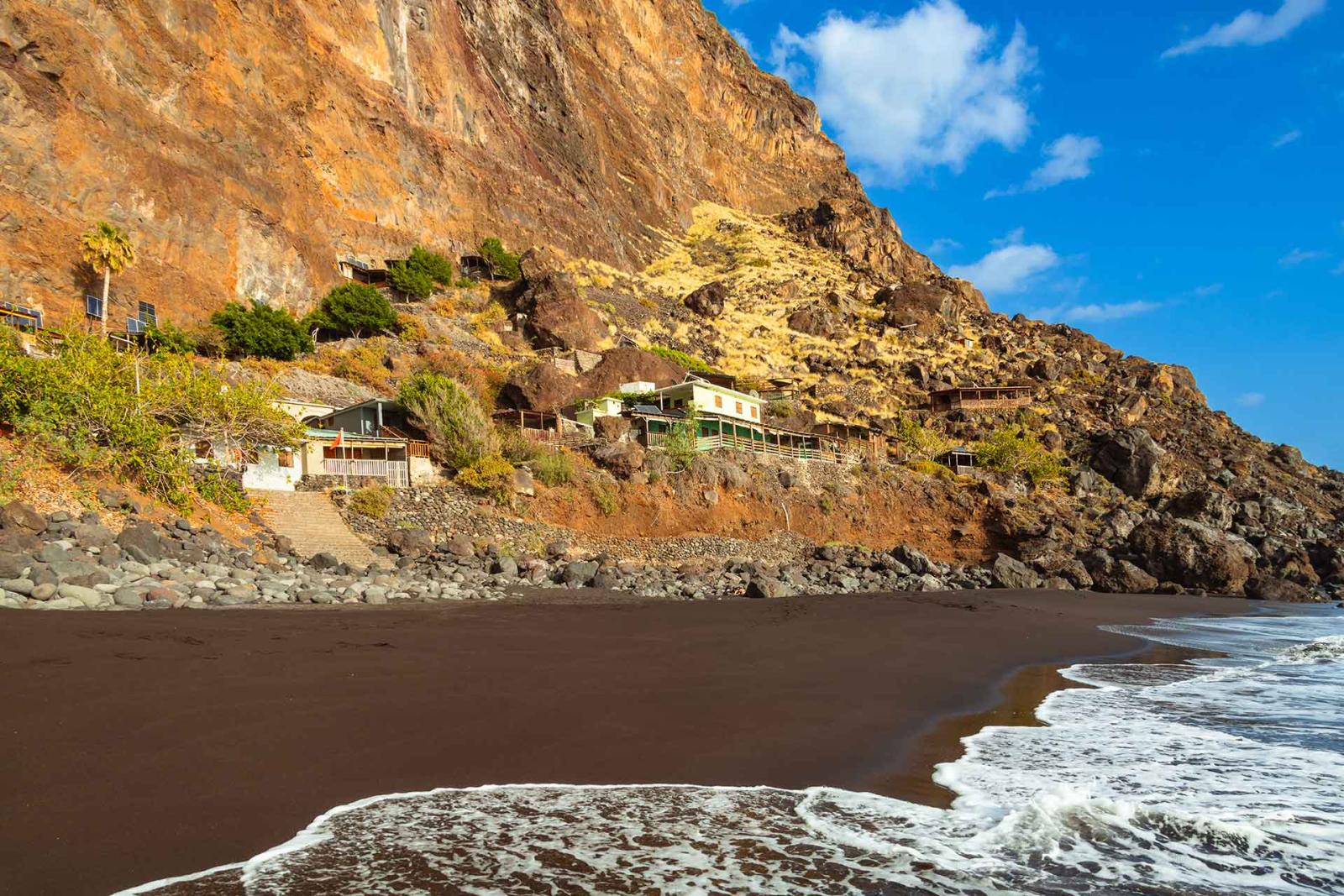
A Walk with History
The municipality of Tijarafe offers visitors a multitude of interesting places starting with its own urban center, where the Nuestra Señora de la Candelaria Parish Church stands. Inside the temple, visitors will find an altarpiece designed by the artist Antonio de Orbarán, which, due to its curious structure, is unique in the archipelago.
La calle del Adiós of this municipality became universal when the Cuban poet Dulce María Loynaz included it in her book Un verano en Tenerife. Today the walls of this street show off the painted verses so that any visitor can appreciate them.
The urban center of Tijarafe and the neighboring neighborhood of El Jesús are separated by the Barranco del Jurado. This Protected Natural Area, which can be accessed from the Church by a comfortable path, owes its name to the natural holes that erosion has been carving into its slopes. In addition to its incredible landscape, the ravine has a high scientific interest for its populations of rock flora full of endemic and protected species.
On the banks of the ravine is the Ermita del Buen Jesús, declared an Asset of Cultural Interest in 1994 and built in the second half of the 16th century.
For the most athletic, Tijarafe has one of the most important night mountain races in the Canary Islands: the Full Moon Trail. This takes place along the trails and landscapes of Tijarafe, always with the company of the full moon. The famous Transvulcania race also passes through this municipality.
Nature and Sea
But Tijarafe is also a paradise for nature lovers who will find, in its surroundings, multiple trailsto enjoy. One of the most recommended trails is the one leading to Porís de Candelaria. This is a circular path that runs along the steep coast to finish in Porís de Candelaria, one of the most genuine corners of the island.
This small fishing village rises inside a natural cave about 50 meters high. Its characteristic white houses were built by the locals, who were looking for a respite from the oppressive summer heat. It is currently inhabited by families who have their second home there, looking to connect with the sea and get away from the stress of everyday life.
Also at the mouth of the Barranco del Jurado is the Cueva Bonita. This double-opening marine cavity is currently one of the highlights of the maritime excursions that run along the coast of Tijarafe thanks to the multicolored reflections of its vault that create a magical experience at sunset.
Another beautiful cove, which is accessed through the Agutavar neighborhood, is Veta Beach . To reach its black sand there are fifteen or twenty minutes from the end of the paved track, which reaches almost to the same cliff, and you have to be careful since its waters open directly to the Atlantic.
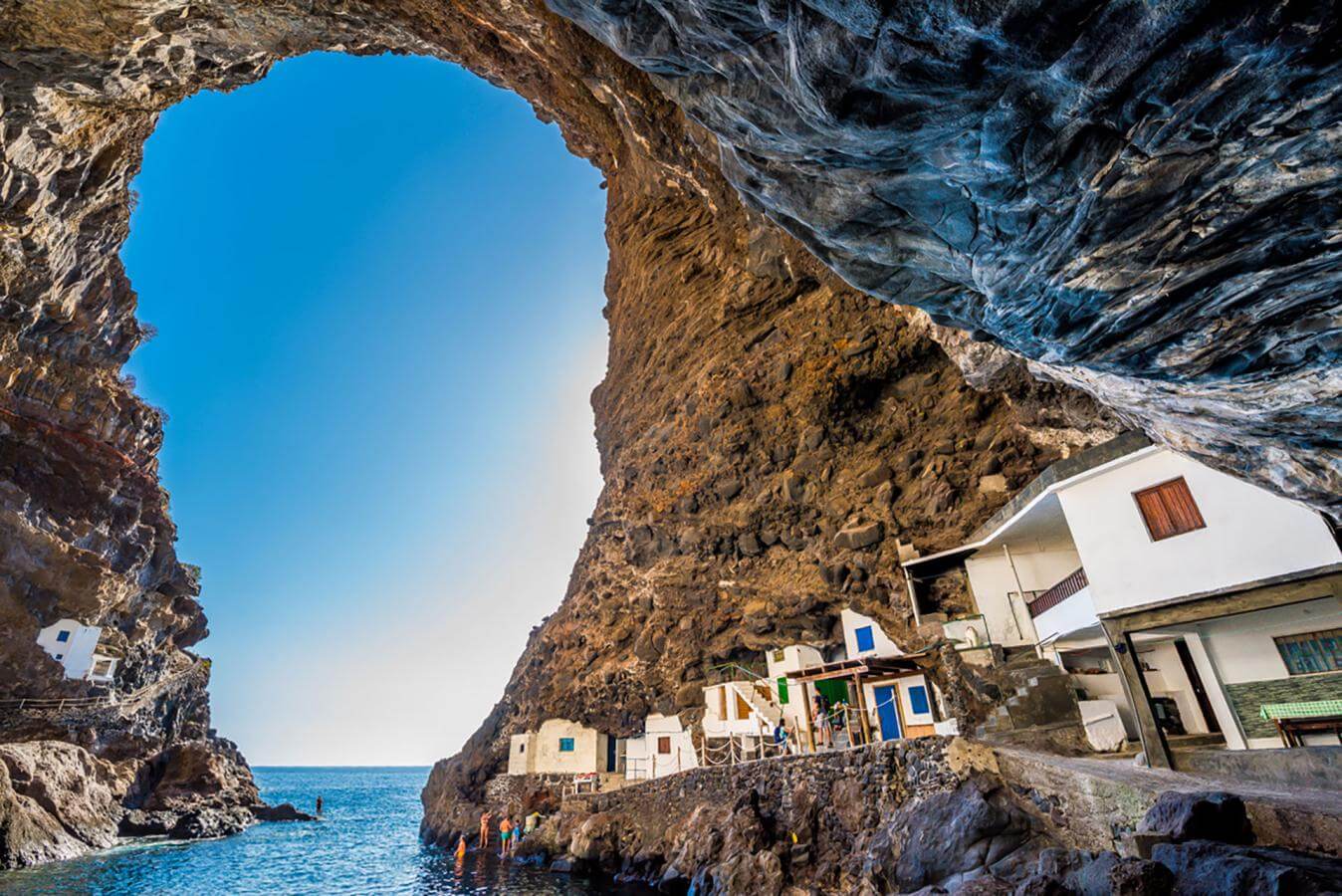
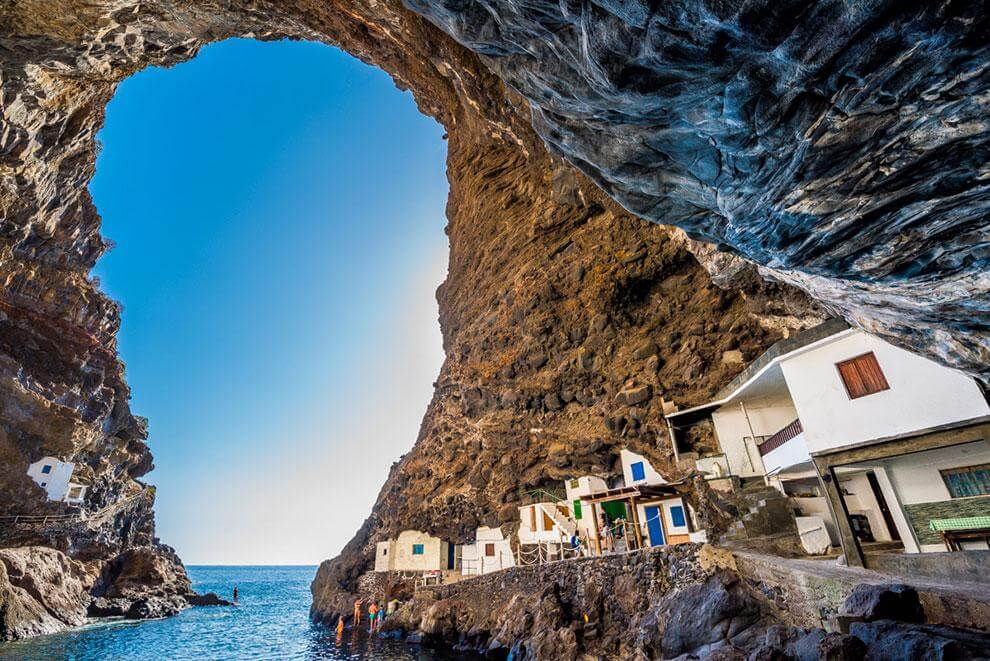

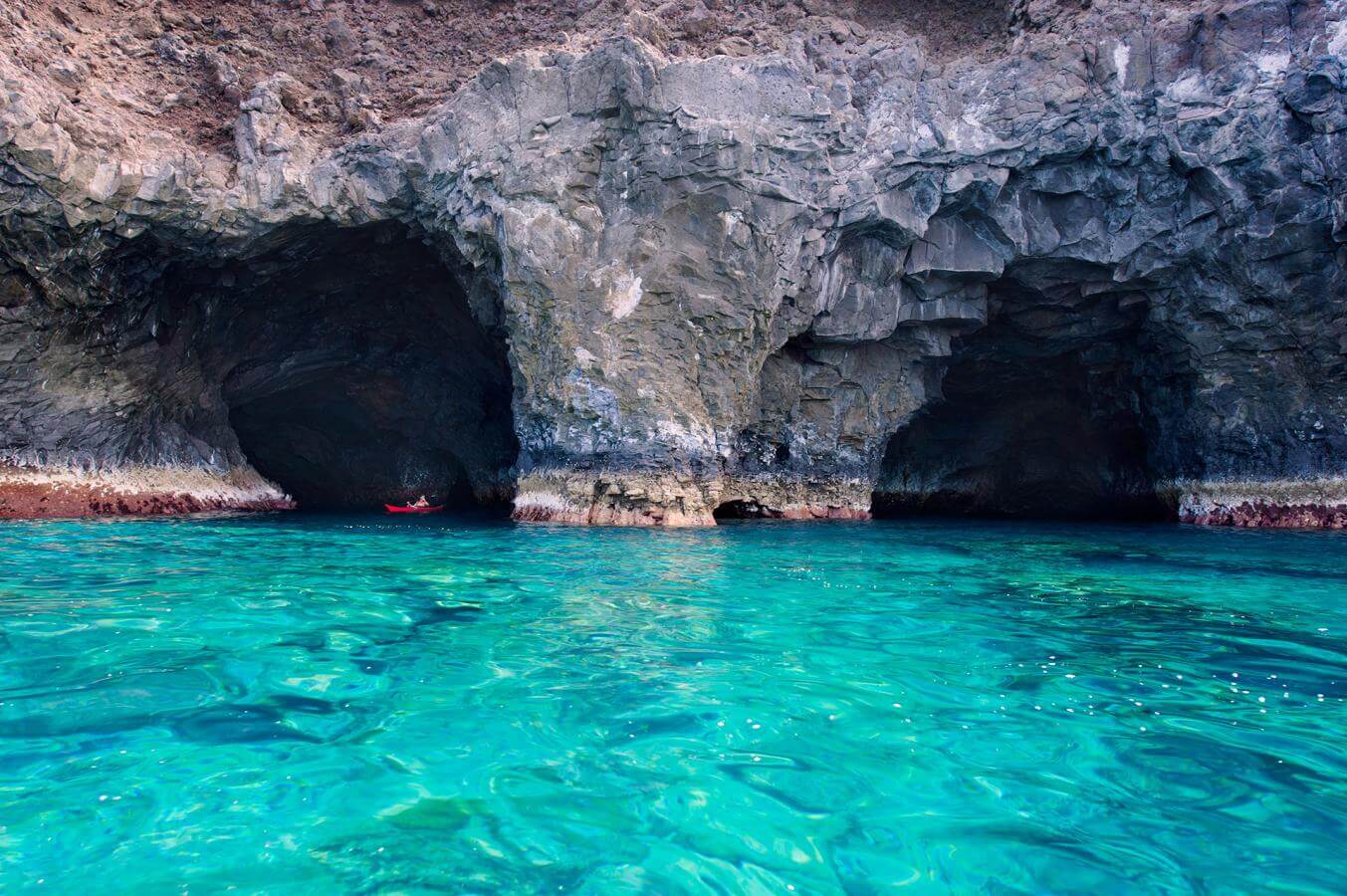

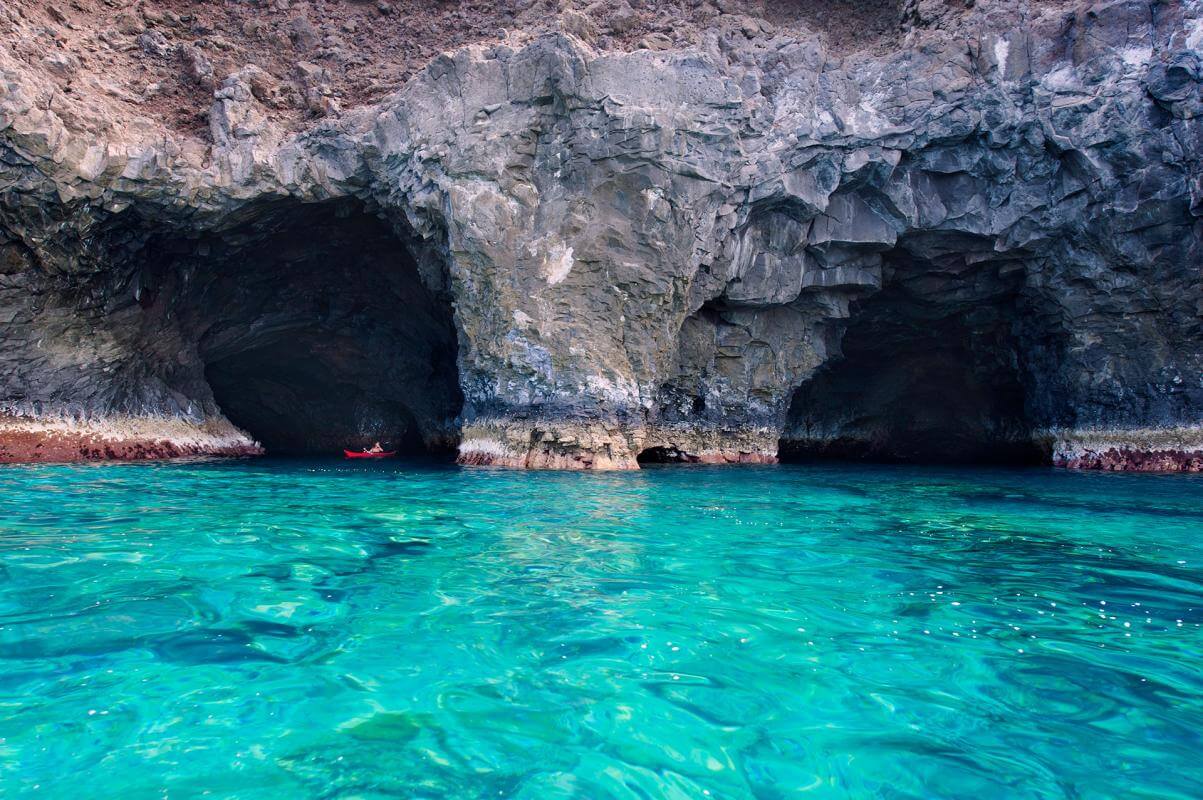
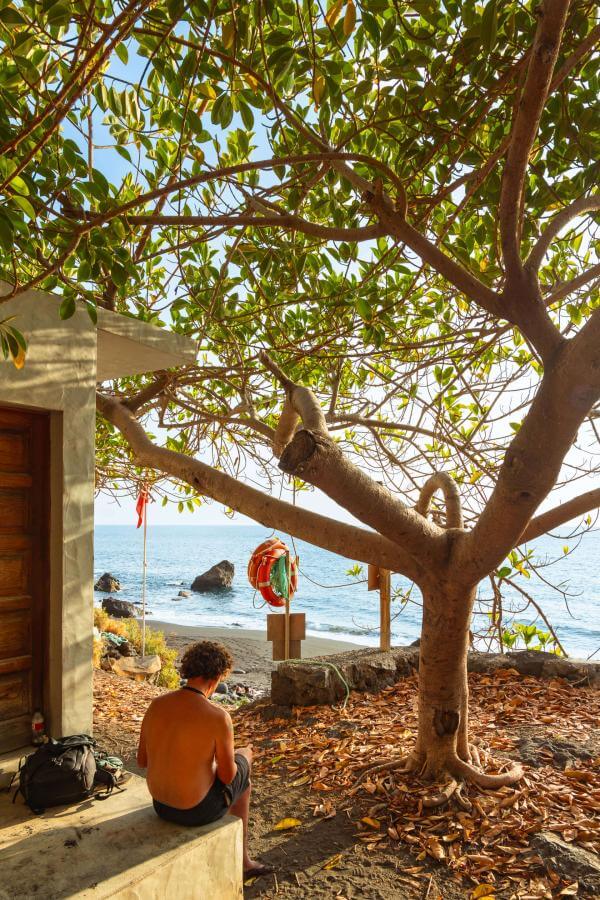


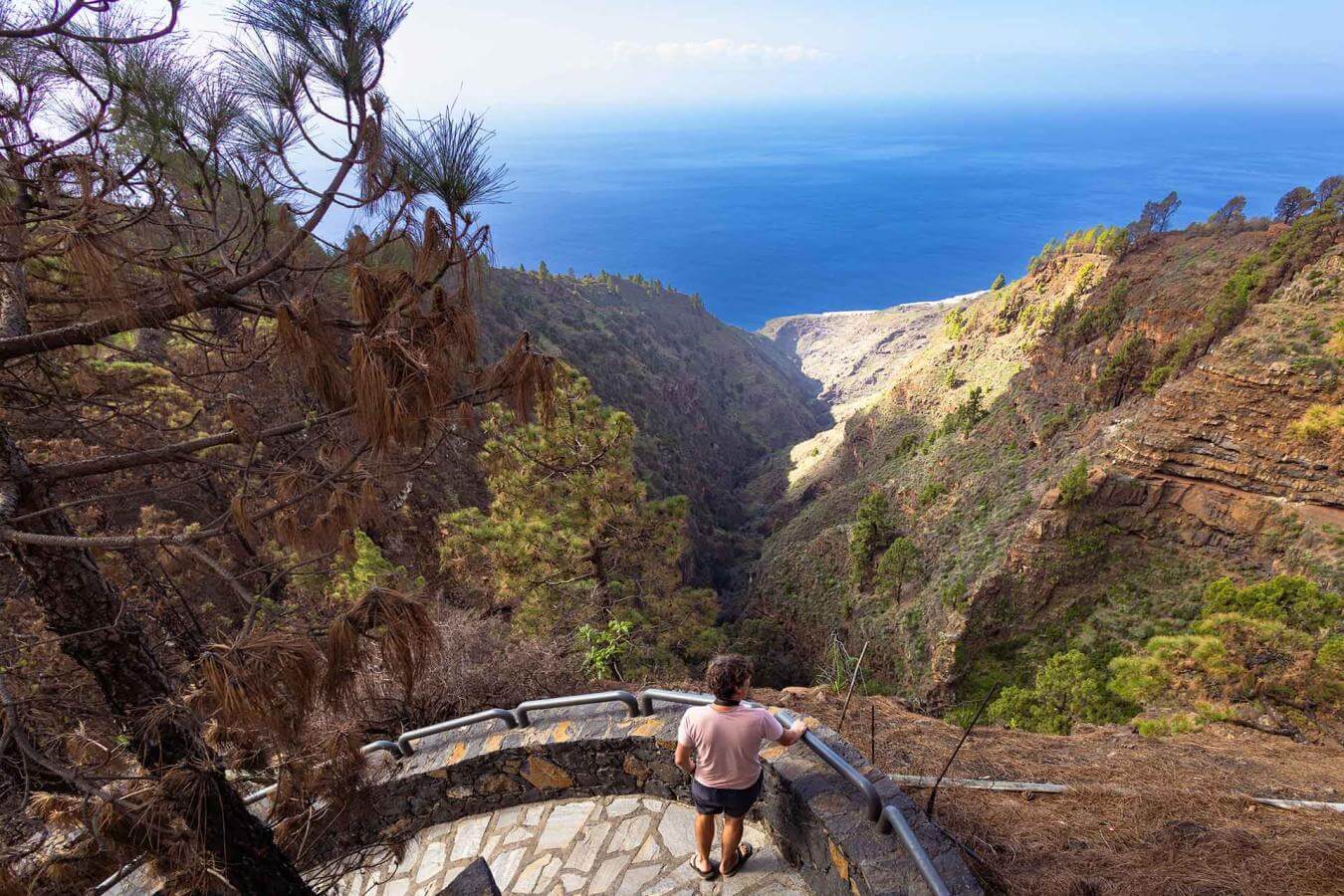



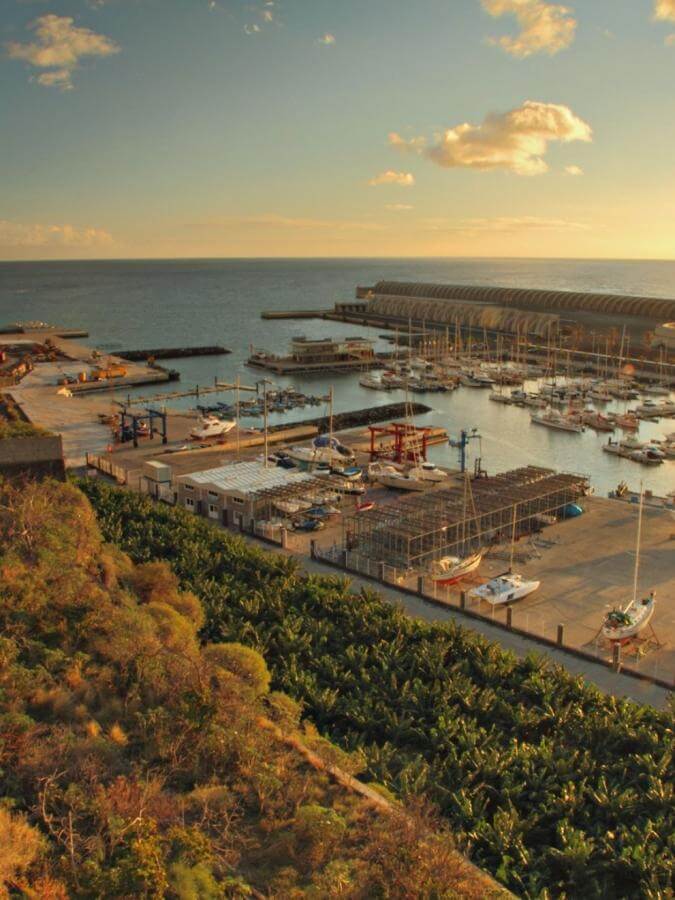
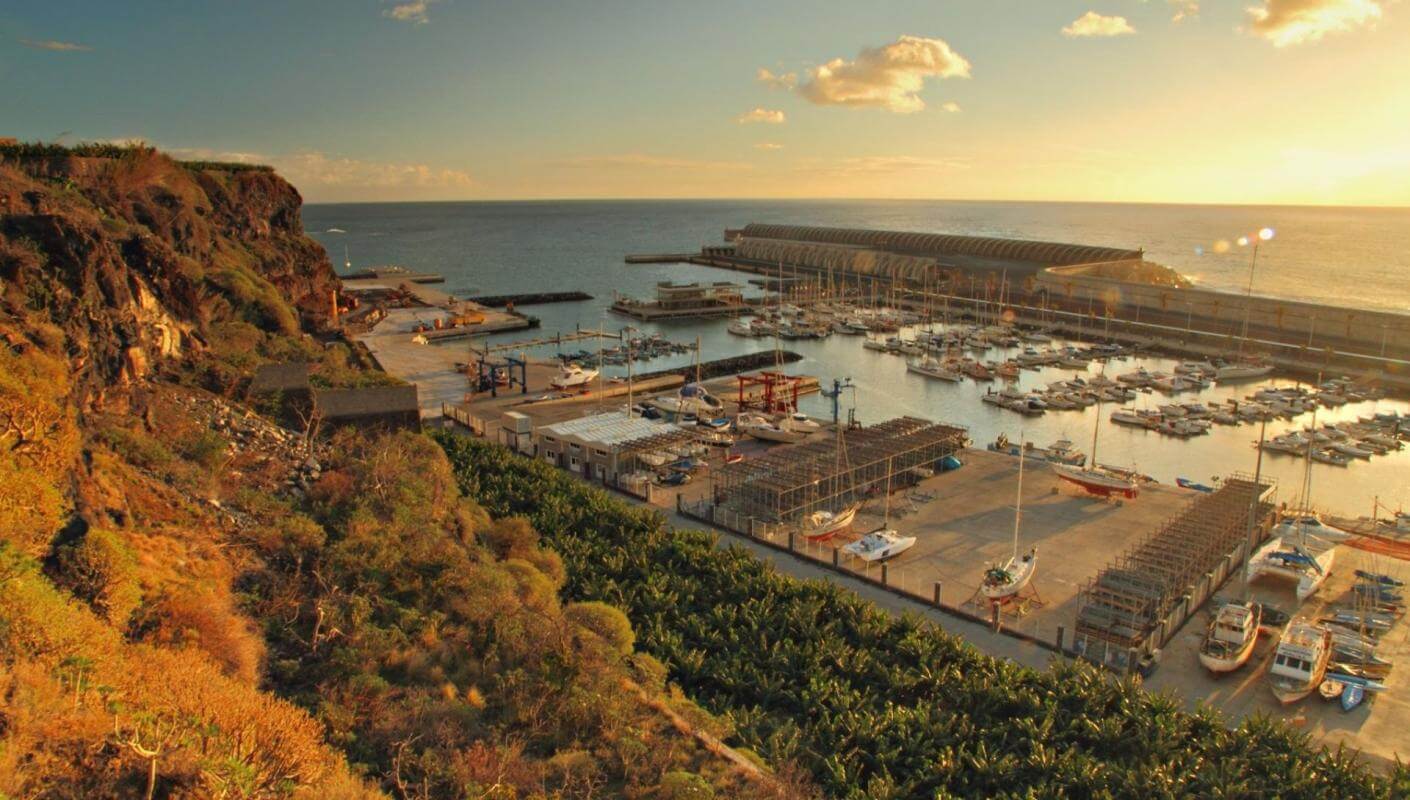
Views for All Tastes
Hikers who approach the Time Viewpoint will have a beautiful view of the wide Aridane Valley, covered by banana plantations and cut by a deep ravine, that of Las Angustias, which ends in the cozy port of Tazacorte. On very clear days, the island of El Hierro can be glimpsed. To reach the viewpoint you can access it by the LP-1 road, between the towns of Los Llanos de Aridane and Puntagorda, or on foot by a steep 3km royal road.
After the eruption that struck the island, from this viewpoint you can get a spectacular view of the new volcano, the lava tails and the fajanas it formed.
Also the viewpoint of the Barranco de Garome offers spectacular views of the ravine that gives it its name. This ravine, which serves as a natural boundary between the municipalities of Puntagorda and Tijarafe, has a vertical drop that passes from 2,200m to zero in just 10km.
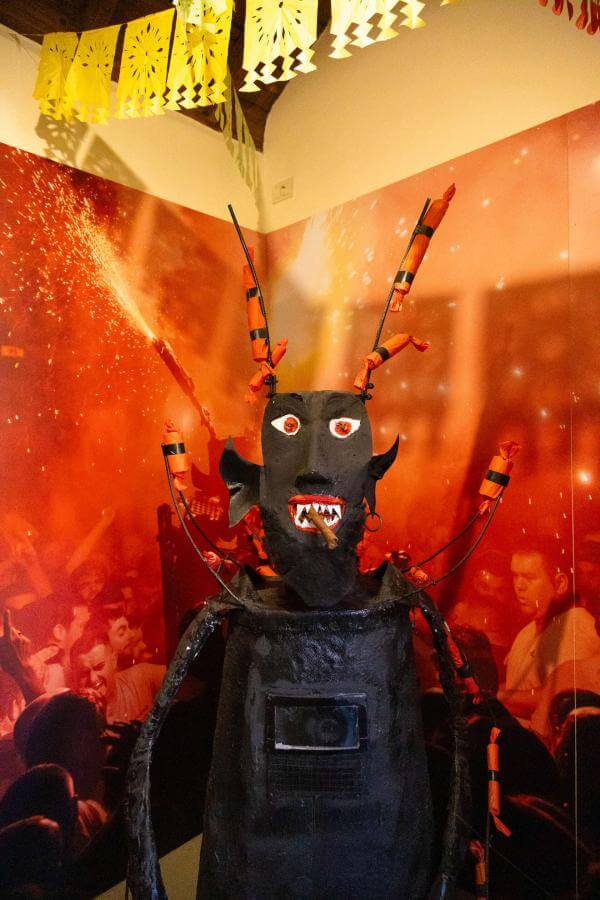

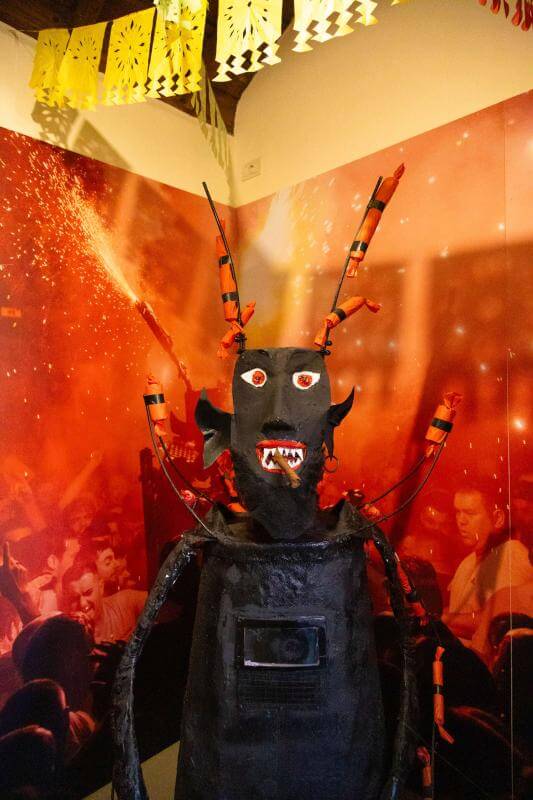
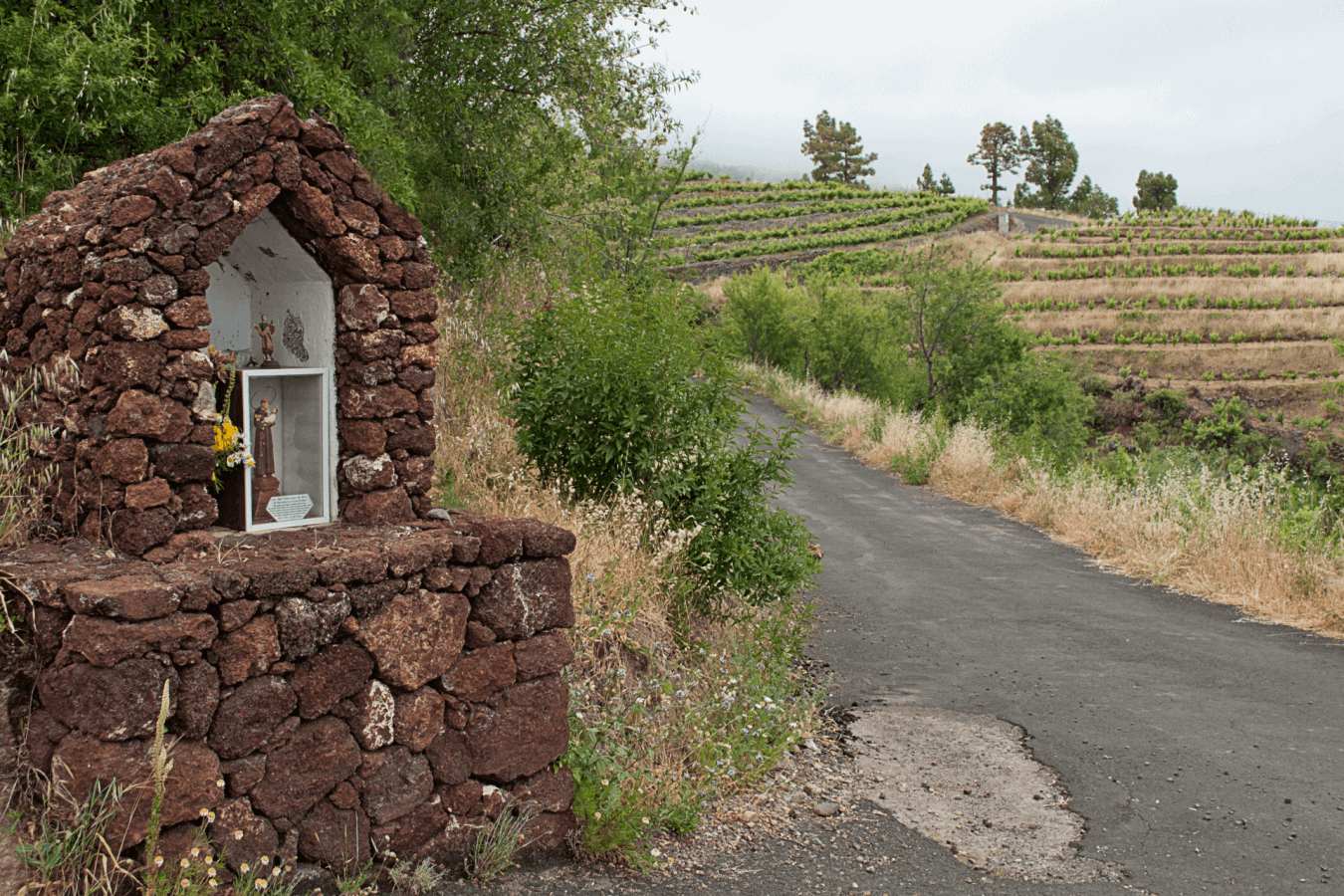


Festivities and Gastronomy
One of the best known festivities in Tijarafe is the so-called fiesta El Diablo. A festival much loved by the local population and the entire island. Authentic devotion and one of the most crowded on the island. Declared an Asset of Cultural Interest, in the category of local scope, and with more than half a century of tradition, this festival is celebrated during a great feast, in the early morning of 8 September, when El Diablo is released, a giant being of lights and fireworks that dances with the crowd to the rhythm of "Titiritiri el Diablo va a salar" (Titiritiri the Devil is Heading Out).
For lovers of good food, the municipality has its own craft brewery, the Isla Verde, as well as the Bodegas Noreste, whose wines originate, for the most part, from vineyards planted and reared according to traditional methods. Not in vain, the midlands of this municipality is a markedly wine-growing landscape, which is well worth a visit through its trails such as the PR LP 10.




